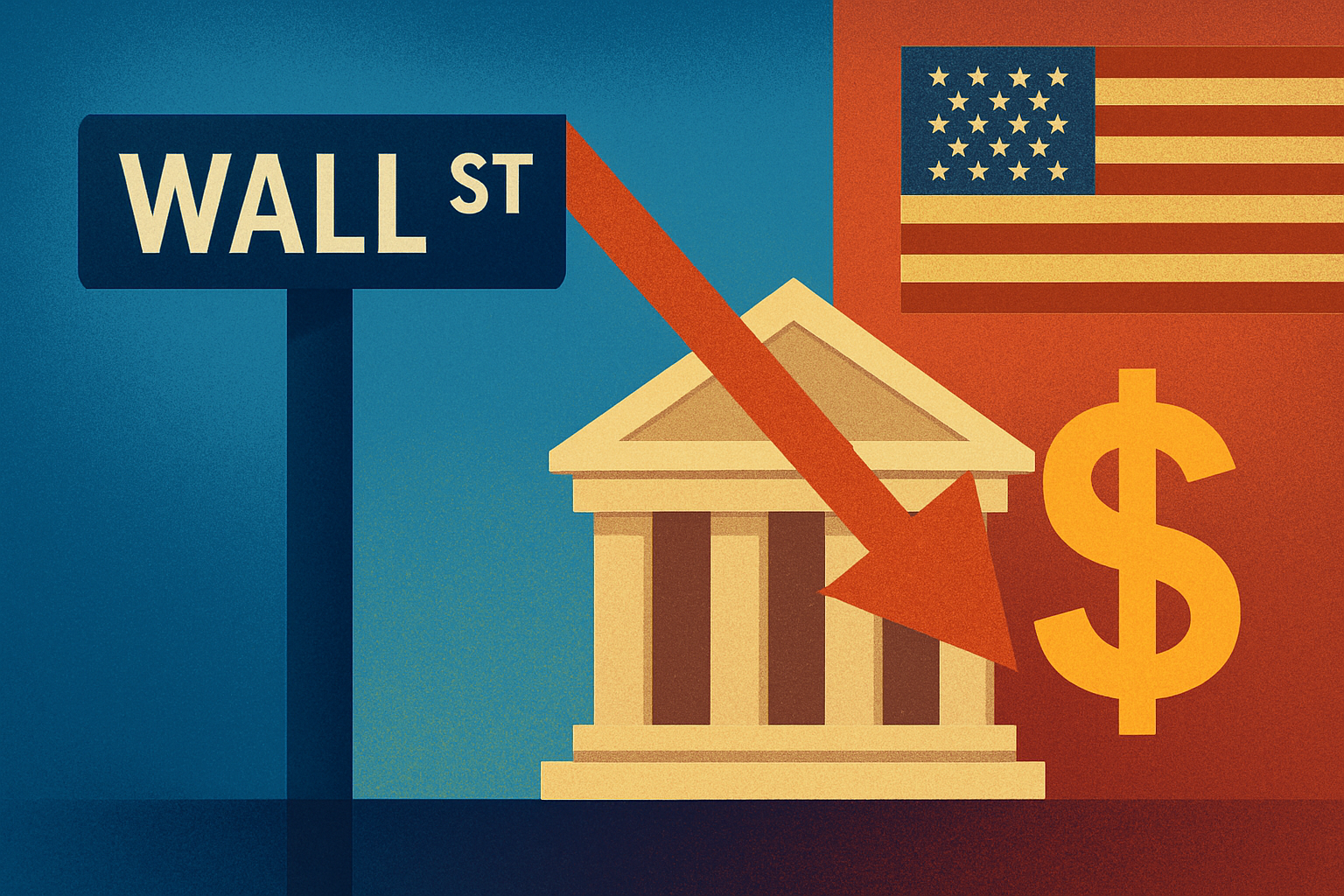Wall Street is facing a fresh bout of anxiety as investors weigh the risks of a potential U.S. government shutdown. Index futures slipped in early Tuesday trading, reflecting growing concern that political gridlock could disrupt the release of key economic data and complicate the Federal Reserve’s already delicate policy stance.
With Treasury yields edging lower and the dollar under pressure, markets are bracing for volatility at a time when investors are still digesting mixed inflation signals and uncertain growth prospects.
Why This Matters for Investors
A government shutdown would have immediate and far-reaching implications for markets. The release of crucial economic indicators — including nonfarm payrolls, consumer price index (CPI), and retail sales data — could be delayed, depriving the Fed and investors of the information needed to gauge economic health.
According to Reuters, futures tied to the S&P 500 fell nearly 0.4% in premarket trading, while Treasury futures showed investors shifting toward safe-haven assets. The uncertainty comes just weeks before the Fed’s next policy meeting, leaving markets vulnerable to speculation rather than hard data.
For investors, the timing couldn’t be worse: equities are priced for optimism in corporate earnings and a possible rate-cut path in 2026, but the shutdown risk injects an added layer of unpredictability.
A Fragile Dollar and FX Implications
The currency markets are flashing caution. The U.S. dollar index edged lower, weighed down by shutdown fears and expectations that delayed data could cloud Fed communication. Analysts at Nomura noted that yen-pair trades may gain traction if U.S. fiscal brinkmanship deepens, given the yen’s status as a defensive hedge.
Meanwhile, the euro gained modest ground as traders recalibrated risk positioning, underscoring the global reach of U.S. political instability.
Potential Market Spillovers
Equities: Beyond the immediate dip in futures, history shows shutdowns often create temporary sell-offs, with volatility spiking in sectors reliant on government contracts such as defense and infrastructure.
Fixed Income: Short-dated Treasury bills could see heightened demand as investors look for safety. Yields on longer-dated maturities may fluctuate as shutdown fears intersect with broader debates on U.S. fiscal sustainability.
Commodities: Gold has already firmed slightly, reflecting classic safe-haven flows. Crude oil, by contrast, remains driven more by OPEC supply dynamics and geopolitical risks than U.S. fiscal headlines.
Future Trends to Watch
- Fed Policy Uncertainty: A lack of fresh economic data could make the Fed’s communications more opaque, increasing market sensitivity to each official statement.
- Political Brinkmanship: Prolonged shutdown negotiations could erode investor confidence, particularly among foreign holders of U.S. assets.
- Risk-Off Rotation: Defensive positioning into utilities, healthcare, and staples could accelerate if shutdown risks drag on into October.
Key Investment Insight
In uncertain macro waters, investors may lean defensive: high-quality bonds and Treasury bills provide stability, while reducing leverage limits downside risks in a volatile environment. Event-driven names — especially contractors tied to government spending — warrant caution. Currency investors should also monitor dollar weakness and potential flows into yen and euro safe-haven trades.
For longer-term investors, shutdowns historically prove temporary, but the broader issue of fiscal credibility in Washington remains a structural concern that could reprice U.S. assets if left unresolved.
Wall Street will continue to trade on political headlines until resolution is reached. For investors, vigilance and disciplined positioning will be essential in navigating this latest episode of fiscal drama.
Stay tuned with MoneyNews.Today for timely analysis on politics, policy, and the market moves that matter most to your portfolio.





